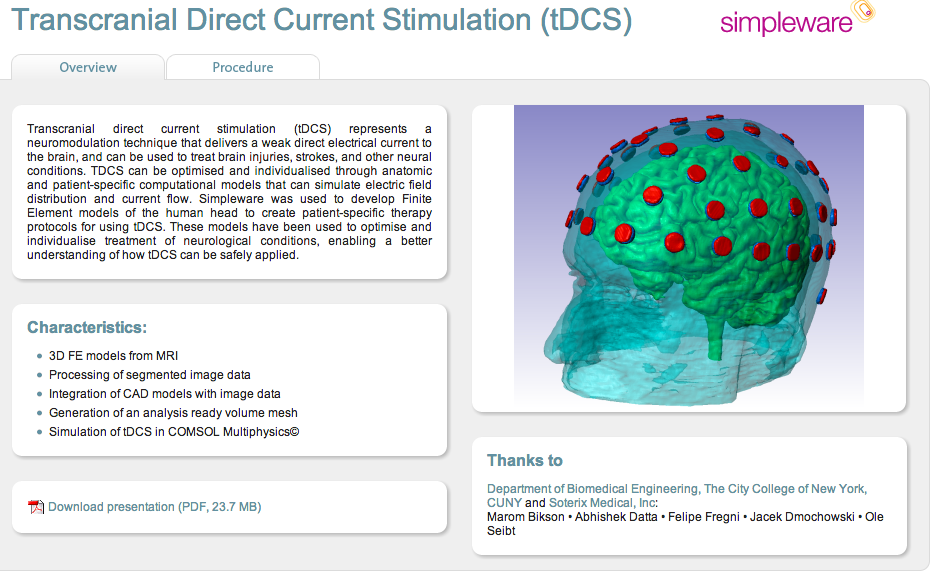Position NE7.1: A full-time post-doctoral position in brain slice neurophysiology is available in the Department of Biomedical Engineering at The City College of New York of The City University of New York. The position involves studies focused on the cellular mechanisms of non-invasive neuromodulation, such as transcranial Direct Current Stimulation (tDCS). Despite being the fastest growing and most promising new therapy for neuropsychiatric disorders, rehabilitation, and neuro-enhancement (healthy individuals), fundamental questions remain about the mechanisms of tDCS. The applicant will have the opportunity to work with leaders in characterizing the cellular effects of stimulation using brain slice studies and modeling, and moreover to interact with a broad range of engineers and clinicians with the goals of translating insights to new technologies and applications. Further information on the Neural Engineering Group at CCNY can be found here http://neuralengr.org.
We are seeking candidates that are highly creative, motivated, and independent with a Ph.D. in neuroscience, biomedical engineering, or a related field. Candidates must have a strong research background in brain slice electrophysiology, with a record of relevant publications. Experience with patch-clamp and/or calcium imaging in brain slice is required.
Candidates will be encouraged and expected to participate in independent laboratory research, and will be expected to write scholarly manuscripts. Candidates must be able to lead and work well in a team. Candidates must have excellent spoken and written English skills. Opportunities for career development (e.g. grant writing, mentoring, teaching) are strongly supported.
Applicants should submit a brief statement of research activities and interests (one paragraph), a current CV, and names and contact information of references. With a two-year contract, salary will be commensurate with experience and accomplishments as part of an overall research effort supported by the DoD, NIH, and NSF. To arrange a meeting with the PI and to send materials required for consideration for this appointment please contact Dr. Marom Bikson at: bikson@ccny.cuny.edu
_______________________________
Position NE7.2: A full time Biomedical Electronics Design Engineer at the staff engineer or post-doctoral level
Job Description: Excellent opportunity in the Department of Biomedical Engineering at The City College of New York for an Electronics Design Engineer experienced in digital and analog circuits. The Electronics Design Engineer will primarily design new medical instrumentation focused on non-invasive optical sensing. This opportunity will allow you to contribute in all aspects of medical device design and development aimed at developing new therapies including new medical devices used in cancer treatment surgery. The selected candidate will have the opportunity to interact with world-class physicians and surgeons and benefit from direct mentorship by clinicians. This is an opportunity where you will need to apply your engineering skills in a dynamic and challenging environment with the goal of improving cancer treatment with next generation medical technologies.
Job Duties:
Develop technical design inputs in concert with clinical users and development team
Lead all research and development efforts in electronic improvements and next generation devices
Guide and oversee mechanical design efforts of all projects
Develop engineering test protocols for device verification
Maintain excellent documentation of all progress on projects and test reports
Lead engineering development team to meet timelines and ensure quality deliverables
Skills/Qualifications:
BS or equivalent in Electrical Engineering or Biomedical Engineering (with electrical engineering specialization).
PhD with emphasis on instrumentation and/or 4 year work experience in electronics design is required.
Experience with biomedical device design and optics/medical optics, are ideal but not required.
Extensive experience with MCU programming, electric circuit design, and electronics a must. Applicants must be highly motivated, self starters with excellent written and oral communication skills. Applicants should exhibit high level leadership qualities and have the capacity to lead multi-disciplinary teams. Experience with grant writing is a plus.
This is a unique opportunity to work with a highly translational project where your engineering skills will have an immediate impact. This position is through an academic institution but entrepreneurship opportunities are available for capable and motivated candidates. Opportunities for publication and academic career development are also available for interested candidates. Send resumes to Marom Bikson bikson@ccny.cuny.edu



